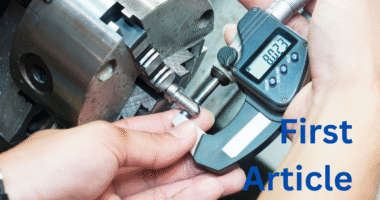Process engineering is the art and science of designing, analyzing, and improving processes to enhance quality, efficiency, and profitability. From manufacturing to healthcare, strong process engineering ensures smooth operations, reduced waste, and consistent results.
To truly master process engineering, professionals must follow a structured approach — one that transforms complex systems into well-optimized, value-driven operations. Below is a step-by-step guide to help you achieve just that.
1. Define the Objective and Scope
The first step in process engineering is clearly defining the problem or goal. Without a well-defined objective, even the best tools or data won’t deliver the desired outcome.
Example:
A beverage company aimed to reduce its production downtime by 15%. By defining the scope to focus on “bottling line changeover time,” the team could target the root cause instead of making broad and ineffective adjustments.
Tip:
Use SMART goals — Specific, Measurable, Achievable, Relevant, and Time-bound — to set a clear direction.
2. Map the Current Process
Before improving a process, you must understand how it currently operates. Process mapping helps visualize each step, identify bottlenecks, and reveal inefficiencies.
Example:
In a hospital lab, mapping the sample testing process showed multiple approval stages that delayed results. By removing unnecessary handovers, turnaround time improved by 25%.
Tools to Use:
-
Flowcharts
-
Value Stream Mapping (VSM)
-
SIPOC diagrams (Suppliers, Inputs, Process, Outputs, Customers)
3. Analyze Data and Identify Inefficiencies
Once the process is mapped, gather data to find where time, cost, or quality issues occur. Look for patterns, delays, and resource waste.
Example:
An electronics manufacturer analyzed machine downtime data and found that 40% of failures were due to poor maintenance scheduling. Implementing predictive maintenance cut unplanned stoppages in half.
Tip:
Use statistical tools like Pareto analysis or root cause analysis (RCA) to prioritize major issues.
4. Redesign and Improve the Process
This is where process engineering turns insight into action. Propose new workflows, automation, or resource allocations to improve efficiency and quality.
Example:
A logistics company automated its shipment tracking system, reducing manual data entry errors and saving 10 labor hours per day.
Common Techniques:
-
Lean methods to eliminate waste
-
Six Sigma for defect reduction
-
Simulation models to test improvements before implementation
5. Implement and Monitor Results
After designing improvements, it’s time to implement changes systematically. Communicate clearly with all stakeholders and track performance using Key Performance Indicators (KPIs) such as cycle time, cost per unit, or error rate.
Example:
A chemical plant implemented a new mixing protocol and monitored viscosity and temperature data. Within two months, defect rates dropped by 18%.
Tip:
Use dashboards or digital monitoring systems for real-time process tracking.
Conclusion
Mastering process engineering requires a balance of technical expertise, data analysis, and teamwork. By following these five steps — defining goals, mapping processes, analyzing data, improving design, and monitoring results — organizations can achieve lasting operational excellence.
When executed well, process engineering doesn’t just improve efficiency; it fosters innovation, safety, and customer satisfaction across every industry.









